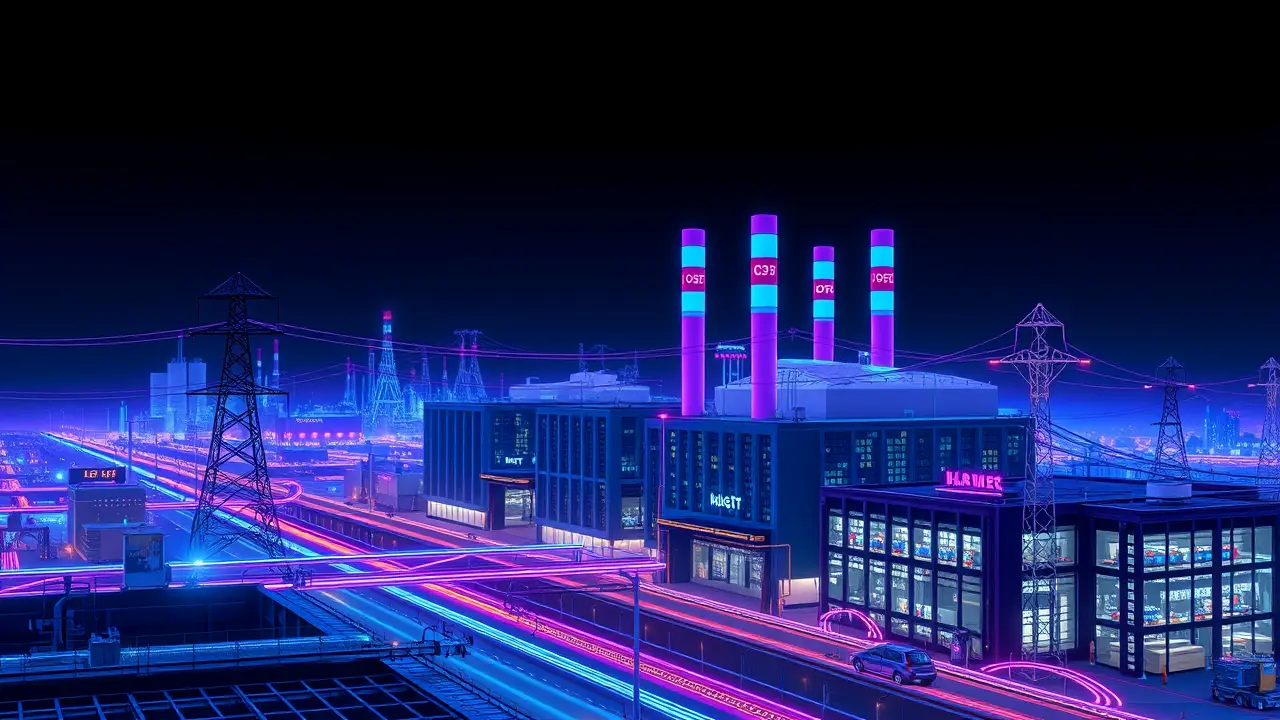
AIchips & hardwareAI Data Centers
AI Data Centers Strain Power Grids Like Major Cities
MI
Michael Ross
22 hours ago7 min read
The staggering energy consumption of artificial intelligence data centers, with individual facilities now drawing power on a scale comparable to major metropolitan areas like Philadelphia, represents a fundamental inflection point in our technological trajectory, forcing a critical re-examination of the trade-offs between exponential computational growth and sustainable infrastructure. This isn't merely an engineering challenge; it's a profound policy and ethical dilemma reminiscent of the industrial revolutions of the past, where the engines of progress—once steam, now silicon—demanded vast new resources and reshaped the physical world.The core of the issue lies in the voracious appetite of the advanced AI models we are racing to build; training a single large language model can consume more electricity than 100 homes use in a year, and the inferencing required to run these models for millions of users creates a constant, massive load that is only beginning to be understood. We are witnessing the emergence of the AI data center as the new American factory, a physical locus of economic value and geopolitical power, but one that, unlike its rust-belt predecessors, is largely invisible to the public, humming away in remote locations yet placing a strain on national power grids that were not designed for such concentrated, relentless demand.The immediate consequences are tangible: utility companies are scrambling to delay the retirement of aging fossil-fuel plants, regional power prices are experiencing unprecedented volatility, and communities near proposed data center sites are grappling with the environmental impact of their immense water usage for cooling. Looking through a historical lens, we can draw parallels to the dawn of the electrified era or the dot-com boom's infrastructure build-out, but the velocity and scale of AI's power requirements are unprecedented, posing a direct challenge to global climate goals and energy security.Expert commentary is starkly divided; optimists point to rapid advancements in computational efficiency, specialized AI chips, and the potential for AI itself to optimize grid management and accelerate the deployment of next-generation nuclear and renewable energy sources. The contrarian view, however, warns of a looming 'Jevons paradox,' where gains in efficiency merely encourage the deployment of even more powerful and numerous models, ultimately increasing total energy consumption.The potential consequences cascade outward, influencing everything from national security—as nations compete for the energy and compute necessary to maintain AI sovereignty—to social equity, as the cost of this digital gold rush could be borne by ordinary consumers through higher electricity bills. The central, unresolved question is not just one of engineering or economics, but of collective will and foresight: How long can this last? The answer will depend on whether we can navigate a path that harnesses the transformative potential of artificial intelligence without allowing its foundational infrastructure to become an unsustainable drain on the very planet it is meant to help steward, a challenge that demands the kind of careful, balanced deliberation that Asimov himself would have championed.
#featured
#artificial intelligence
#data centers
#energy consumption
#electrical grid
#infrastructure
#economic impact
Stay Informed. Act Smarter.
Get weekly highlights, major headlines, and expert insights — then put your knowledge to work in our live prediction markets.
© 2025 Outpoll Service LTD. All rights reserved.